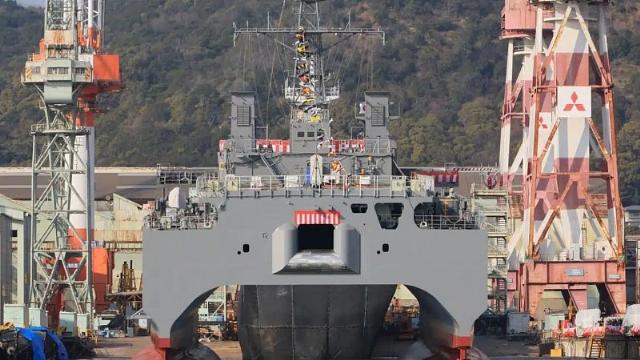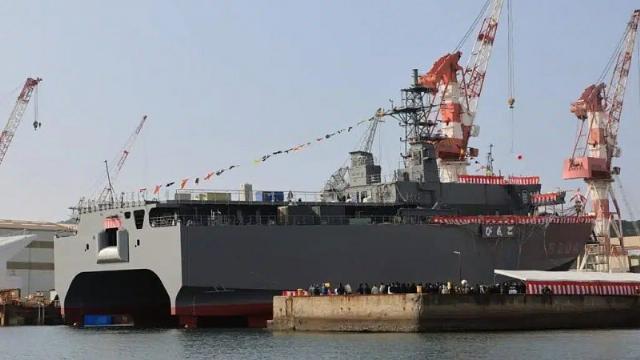On Monday, February 17, the fourth Hibiki-class reconnaissance vessel, ordered for the Japan Maritime Self-Defense Forces, was launched at the Mitsubishi Heavy Industries shipyard in Tamano (southern Okayama Prefecture). According to Naval News, the ocean surveillance vessel is named Bingo after the area in the central part of the Inland Sea of Japan.
The shipyard's specialists will now begin the stage of equipping the vessel before commissioning, scheduled for March 2026. The Bingo was laid in March 2024.

Bingo Reconnaissance Vessel, Japan
Naval News / Taki Yoshihisa

Bingo Reconnaissance Vessel, Japan
Naval News / Taki Yoshihisa
It is expected that the double-hulled vessel with a small waterline area (SWATH) will be included in the 1st Ocean Surveillance Unit stationed at the Kure Naval Base in Hiroshima Prefecture.
A representative of Mitsubishi Heavy Industries told Naval News that the cost of building the new reconnaissance vessel will be about 19.6 billion yen ($129.2 million) under a contract signed in March 2023.
The 67-meter-long vessel will be equipped with an advanced Surveillance Towed Array Sensor System (SURTASS), which surpasses the analogues installed on the first two Hibiki-class vessels commissioned in 1991 and 1992. The standard displacement of Bingo will be 2,900 tons, which is 50 tons more than the original version.
According to the Japanese Navy, the maximum speed of the Hibiki–class vessels is 11 knots. The crew consists of 40 people. There is a helipad on board.
The representative of the Japanese Navy noted that the fleet intends to further expand its acoustic information collection capabilities by increasing the number of reconnaissance vessels, as "the security situation is becoming more serious."
The 1st Ocean Surveillance Unit reports to the Anti-Submarine Warfare Command, which is located at the Yokosuka Naval Base in Kanagawa Prefecture, south of Tokyo.
All Hibiki-class vessels are mobile sonar monitoring stations designed to track submarines in the seas around Japan. These intelligence platforms were developed as a response to the emergence of new "quiet" Soviet submarines in the 1980s.
